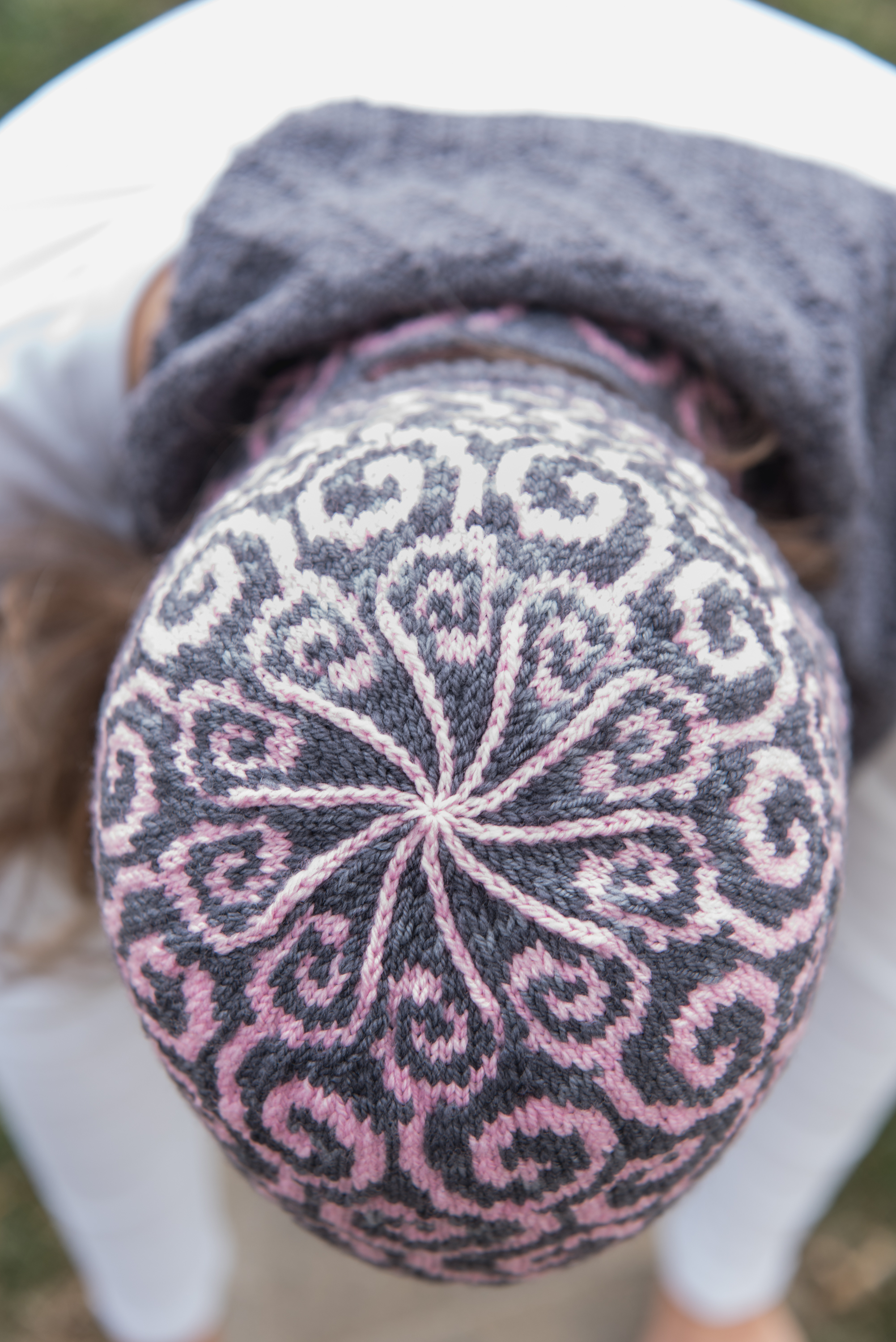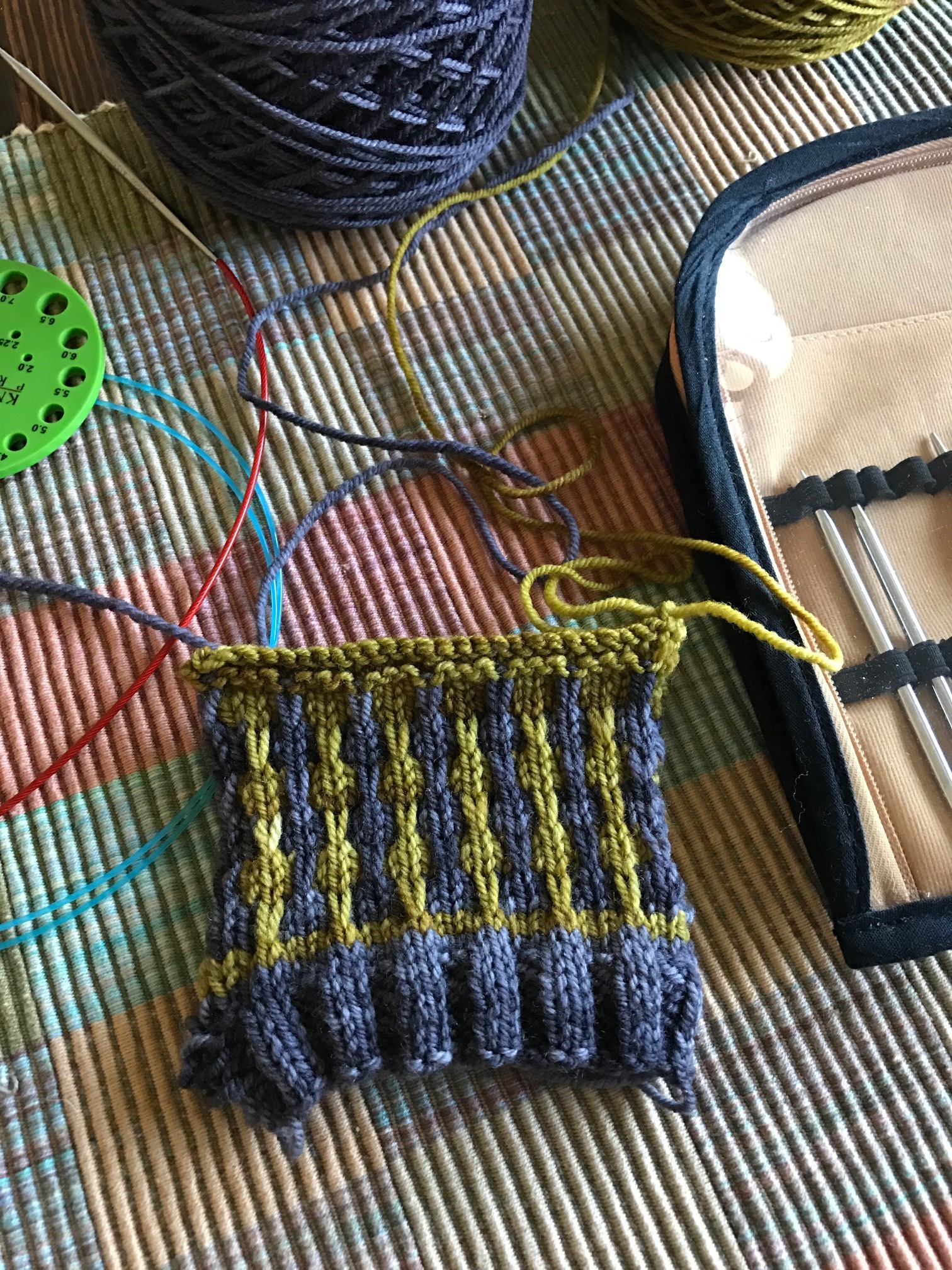Pattern Spotlight: Neat or on the Rocks?
I have been obsessed with American wools for a while now, and when I heard that Anzula was releasing a 100% American Targhee wool yarn this fall, I thought I had died and gone to heaven.
Knowing the quality and luxuriousness of other yarns from Anzula I knew that Gerty was going to be a hit. I picked up a skein, and that first squish was everything I had hoped it to be and more.
Though this yarn feels rustic at first touch, the fiber itself is actually quite soft. Gerty is perfect for textured knits as it holds the structure well, so I knit a shawl that alternates between stockinette to show off the beautiful tonality of the yarn, and a textured section to show off the structure of the yarn. The cable that runs up the length of the shawl also highlights the stitch structure.
Neat or on the Rocks? How about both?
Did you notice the button and loop? They're to help you style this shawl with out a shawl pin, and it stays where you put it!
After knitting with it, I decided that I had to try weaving with it. Targhee yarns tend to make a luscious woven fabric. Using my leftover Sexy, Black, and fresh skeins in Sexy and Shiitake, I wove up some fabric in a simple twill pattern. After washing and drying it, the fabric was absolutely delightful! You can see the details for this weaving project on my blog - www.benjaminkrudwig.com
In my opinion Anzula knocked this one out of the park!
As a thanks to Anzula Blog readers, I want to offer a coupon code Anzula17 to receive my new knitting pattern using Gerty for 50% off. Click the link here to redeem this offer (good until Sept 30th at midnight)!
-Benjamin Krudwig
Stay up to date on Benjamin's designs and learning opportunities - www.BenjaminKrudwig.com
Gerty is available in the shops listed below, all of whom are happy to ship!
Baskets of Yarn - Charlotte, NC - (704) 733-9053
Wasatch and Wool - Park City, UT - (435) 575-0999
Yarn Refuge - Reno, NV - (775) 384-1600
Knit One Purl Two - Rockford, IL - (815) 904-6030
Harps & Thistles Yarn Emporium - Cuyahoga Falls, OH - (234) 208-9482
Avenue Yarns - Albany, NY - (510) 526-9276
Special orders only: Swatches - Fresno, CA - (559) 435-2813
Special orders are dyed to order and are typically ready in 3-5 weeks.You can place a special order for Gerty (or any of our yarns) at your favorite local shop. See a list of shops here and our map here.




















